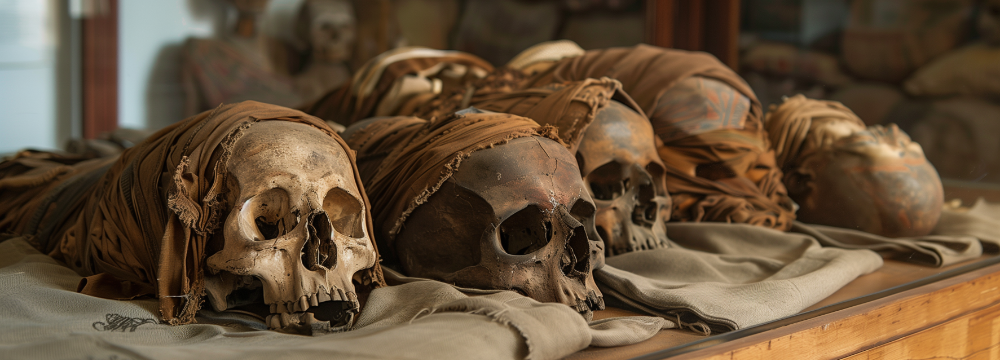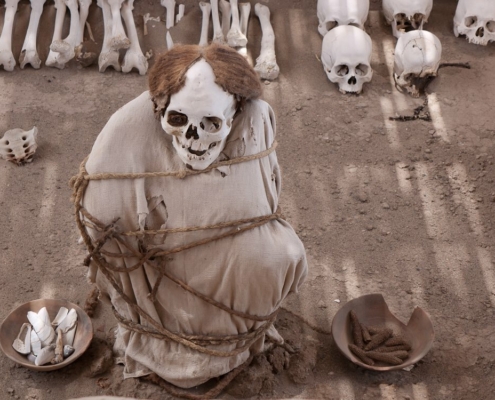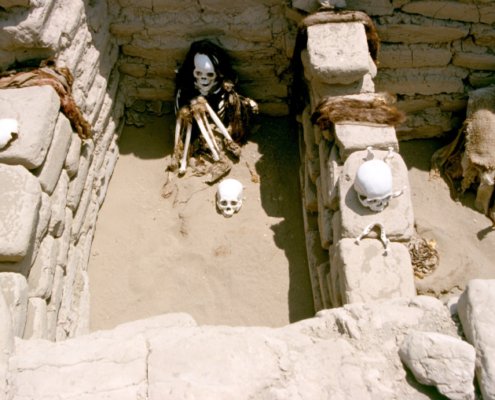Journalist Jois Mantilla seeks to unravel the truth about the Nazca Mummies.
By Maximo Veron and Toby Martinez
Peruvian reporter Jois Mantilla began his career in 1990 when he started working on radio programs, mainly focusing on music. Later, he delved into the field of journalism. He then had the opportunity to become a television reporter, thanks to his experience working in radio, which gave him the ability to communicate quickly and effectively.
Mantilla’s first major job as a television reporter was covering a border conflict between Peru and Ecuador. It was an experience that, at the age of 23, was a significant challenge but also a learning opportunity that allowed him to quickly stand out in the television field.
Since then, he has covered a wide range of important events in Latin America, from hostage situations in embassies to scientific discoveries in Antarctica. Mantilla’s focus has been primarily on political coverage, current events, and scientific and cultural topics. He has traveled to various countries in the region to interview presidents and cover significant events such as Hurricane Mitch in Central America.
After 15 years of working independently as a journalist producer and running his own communications office, in 2017, he learned about the discovery of strange mummies in Nazca, Peru, with three fingers and toes. He decided to get involved in the investigation of these bodies and joined a group of scientists, which included Mexican researcher Jaime Maussan.
“I decided to get involved in the investigation of the Nazca mummies almost immediately, motivated by my interest in unraveling the mystery behind these bodies and the importance this discovery could have for understanding human history and evolution. Although I am not a researcher of unidentified flying objects, my background as a journalist makes me interested in cases like this, where there is uncertainty and questions to be answered,” Mantilla said in a recent video interview with the Roswell Daily Record.
Initially, his skepticism led him to approach the case with caution, he said. Still, as he delved into the research and examined the scientific findings, he realized the relevance and potential impact of this discovery. Since then, he has been committed to researching and disseminating accurate and objective information about the Nazca mummies.
According to the team of researchers, the first analyses carried out on the Nazca mummies yielded a series of interesting and significant data. The team claims some of the most notable findings included:
Exceptional preservation: The bodies were remarkably well preserved, with all their internal organs intact and their last meal inside them. This preservation was achieved through a combination of native mummification techniques and dehydration.
Unique physical characteristics: The mummies exhibited unusual physical characteristics, such as elongated heads with only three fingers and toes.
Multi-Ethnic DNA: Genetic analyses revealed that the mummies had DNA from multiple ethnic sources, including human genetic components and DNA from other species, suggesting possible genetic manipulation.
Approximate age: Carbon-14 tests indicated that the mummies were between 700 and 1,800 years old, placing them historically within three civilizations in this part of Peru: the early Nazca, the Wari, and finally, the Incas.
Eggs were also found inside three of the Nazca mummies.
The team claims the eggs contained embryos in gestation. These embryos were at different stages of development inside the eggs. According to the analyses, it was determined that three of the mummies were gestating eggs before they died.
The team says the analysis showed that these eggs were translucent, allowing the bones behind the mummy’s spine and ribs to be seen. This phenomenon suggests that the eggs were biological and composed of organic tissue, not stones or metals.
The team speculated that the embryos developed inside the eggs within the mother’s body until reaching a certain stage of maturity, at which point the eggs broke and the beings were born. This process is similar to reptiles and some fish, where eggs develop inside the mother’s body and hatch internally before the young are released.
According to the analyses, it has been suggested that the DNA of the beings found in the Nazca mummies was composed of a combination of different genetic sources. In particular, human DNA from the region that is today known as the Philippines has been identified, as well as DNA from animal species such as the chimpanzee from Africa and the bonobo from Africa. Additionally, the presence of a fourth type of unknown DNA has been mentioned, which the team said suggests the possible intervention of a higher intelligence that genetically manipulated these creatures.
This combination of human DNA and other species has led to the hypothesis that these mummies could be the result of genetic experiments or manipulations carried out by an ancient civilization with advanced biotechnology.
The Peruvian government and Ministry of Culture have expressed a skeptical stance regarding the Nazca mummies. They have issued statements casting doubt on the authenticity of the findings. They have suggested that the mummies could be forgeries.
So far, according to Mantilla, more than five new species have been discovered in Nazca. In the coming weeks, according to him, there will be more shocking revelations about new discoveries released.








 KGRA Digital Broadcasting
KGRA Digital Broadcasting KGRA Digital Broadcasting
KGRA Digital Broadcasting